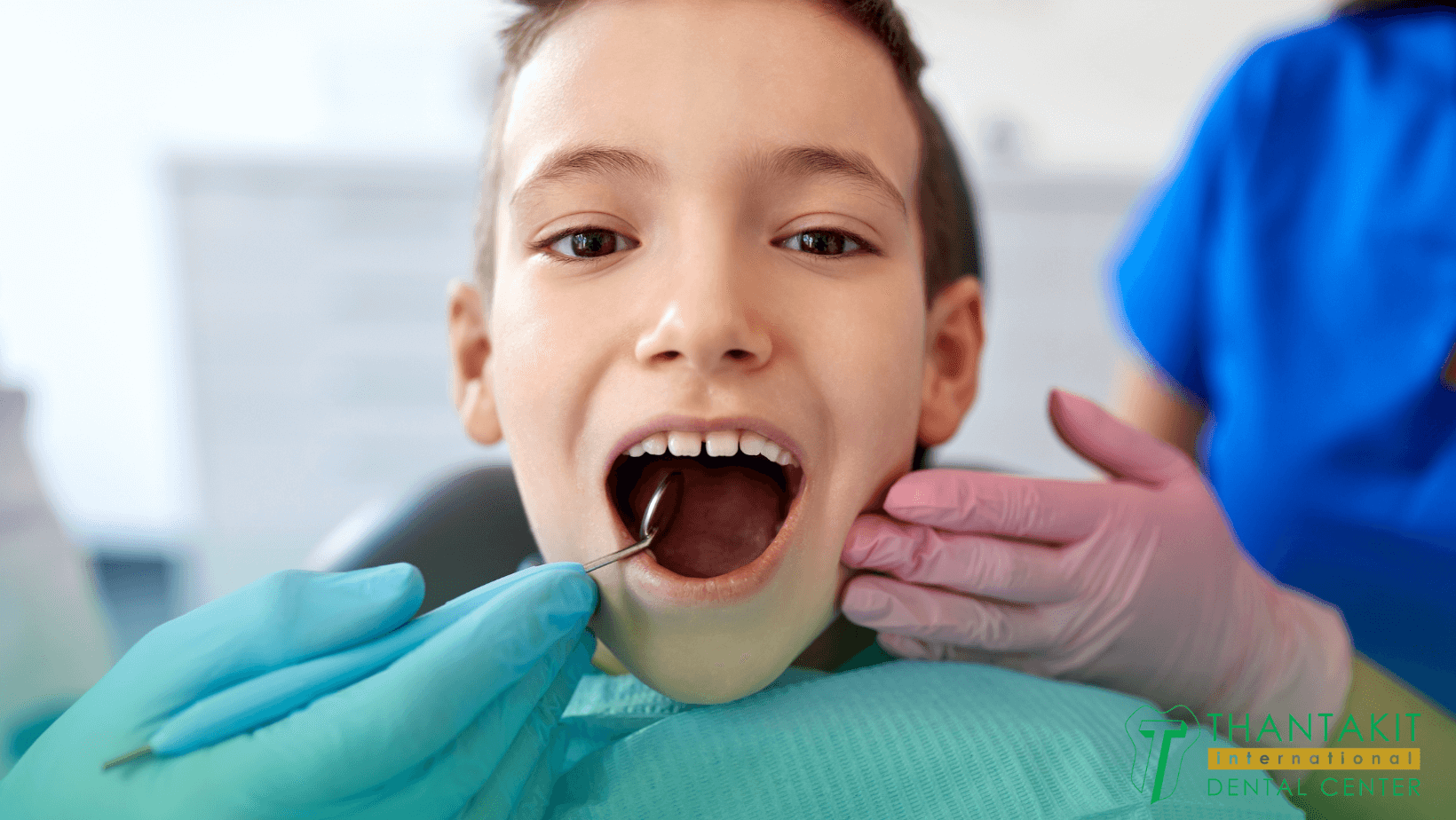We all know that breaking, chipping, or cracking a tooth hurts. Teeth aren’t just protruding bits of bone or keratin like nails or hair you can easily cut off then replace. Instead, they’re actually living extensions of our body, with roots and nerve endings as well as blood vessels to nourish them.
Unfortunately, we can damage our teeth in a number of ways. The damage can be minor or major depending on your dental health and the type of injury involved.
Page Contents
Why Do Teeth Crack?
A tooth gets cracked or fractured because of age, bruxism (tooth grinding), blunt-force trauma, and other circumstances.
-
Most Common in Children and Seniors: Most cases of tooth fractures occur with older people and children. However, any person of any age can crack their teeth.
-
Asymptomatic: You may not display any symptoms of a fractured tooth at the moment despite the hairline crack still being there.
-
Symptomatic: Or you might notice it immediately because of the swelling gums, tooth sensitivity, and shooting pain from the errant tooth or teeth.
-
Multitude of Solutions: Dentists can approach fracture treatment in a multitude of ways. It mostly depends on the location of the crack and how severe it is. You could get filling, cement, or a crown to fix the tooth.
If you suspect you’ve broken a tooth or two, see a dentist post-haste. The dentist will know what to do. They’ll either fix the structure’s integrity or hide the crack for the sake of aesthetics.
What Is a Cracked Tooth?
A fractured, cracked, chipped, or broken tooth, also known as cracked tooth syndrome (CTS), happens when a crack develops in your tooth, breaking it apart from the enamel layer to the dentin and cementum layer and beyond.
This crack can be harmless, small, and shallow. It can also cause your tooth to split or break apart, resulting in sensitivity or even outright agony.
There are two parts of the tooth.
-
Crown: The visible part of the teeth above the gums with an outer enamel shell and an inner dentin layer. It’s the layer that does all the chewing and grinding of your food.
-
Root: The part of the teeth lying below the gums. It’s connected to your jaw and hooked to the tooth socket. The tooth root is sensitive because of its nearness to the pulp and nerve connections as well as blood vessels delivering nutrients to it.
Both of these tooth parts consist of the following layers.
-
Enamel: The visible hard, white outer bony surface. That’s the layer the crown is mostly composed of.
-
Dentin: The middle gray area of the tooth. Even at this layer, there are nerve connections linking the tooth to the rest of the body.
-
Pulp: The soft inner center of the tooth containing the nerves and blood vessels linked right to the root.
When you crack a tooth, it can affect some or all of the layers. This depends on the depth of the crack. Cracked tooth treatment relies on where the damage has happened and how severe it truly is.
A cracked or broken tooth may feel sensitive or hurt badly. It may also not, because some fractures are shallow and cause no pain-related symptoms. Regardless, consult your dentist immediately.
Get treatment right away to decrease your risk and increase your chances of a successful cracked tooth repair.

What Should You Do After Breaking or Chipping a Tooth?
Dentists usually recommend patients to get their teeth fixed in a clinic or center. They don’t advise home remedies for a broken tooth. However, you can accomplish certain things to safeguard your compromised chompers and mouth from further harm.
-
Rinse with Warm Water: Gargle with warm water for mouth rinsing ASAP if you end up chipping or cracking a tooth. It’s for the sake of hygiene and cleaning the teeth. This is in accordance with American Dental Association (ADA) recommendations.
-
Apply Pressure to Stop Bleeding: If there’s any bleeding near the tooth or on the gums, apply pressure to stop it. Put in cotton balls to absorb the blood.
-
Place a Cold Compress: Place a cold compress on the area if there’s any swelling from the gums as well.
-
Wrap Piece of Broken Tooth in Gauze: If you can search for the rest of your cracked teeth and put it/them inside a wet gauze blanket. You might need to bring them with you on your trip to the dental center.
-
If You Lost or Dislodged Teeth: If the tooth itself got out of the mouth like popcorn, grab it by its enamel crown via gauze pad then pop it back into the tooth socket if you could. Don’t if you can’t.
If your tooth is filthy, wash it with water. Don’t clean or scrub it with any other solution. Don’t clean off the remaining tissue or flesh matter either. Otherwise, just go to the dentist already.
-
Storage of Lost Tooth: If you can’t put the tooth back into your socket, you can put it in a glass of water, a solution made of saline, or milk. Now drive straight to the dentist within half an hour or so.
How Do You Relieve the Pain of a Cracked Tooth?
To relieve the pain of a cracked or chipped tooth do the following:
-
Warm Water Rinse and Ice Compress: Get some warm water and rinse your mouth by gargling with it. Afterwards, apply an ice bag or cold compress your cheek, lips, jaw, or anywhere near the affected tooth in an interval of a couple of minutes to reduce swelling.
-
OTC Painkillers and Anti-Inflammatory Drugs: Acquire pain medication of the over-the-counter (OTC) variety and anti-inflammatory drugs. Take them as long as you don’t overdose. Also avoid painkillers you’re allergic to.
-
Clove Oil: Apply some topical clove oil to the area where the cracked tooth is. This oil has eugenol as an active ingredient, which is known as an anesthetic that has anti-swelling abilities.
How Do You Protect the Cracked Tooth Until Your Visit to the Dentist?
If the damage of your tooth is a jagged edge and/or a small chip, you can put wax on the sharp parts to prevent them from damaging your mouth or slicing your tongue. Don’t do this for larger chips or if a whole section of your tooth is removed.
This is because you could make the cracked tooth break apart as you floss. For minor chips with jagged edges, you can use dental wax from OTC fix-it kits at your local drugstore.
Don’t chew with the cracked tooth or the side where it’s placed. Also, floss around but not directly on the tooth to decrease irritation risk and pressure. Wait until the teeth get dental assistance.

Injuries That Require Treatment and Those That Don’t
There are different types of cracks. Some cracks hide below the gumline or right inside the tooth (dentin or cementum layers). Others are visible on the enamel. Some hurt and some don’t. They may even be mistaken for periodontal disease, tooth sensitivity, or cavities.
Then again, any cracked tooth can get injuries ranging from cosmetic damage to serious dental pain. Here are the types of cracks your cracked tooth could have treatment-wise.
-
Cracks That Don’t Require Treatment: Not all chips or cracks warrant treatment. Some cracks are quite commonplace even. For example, according to 2014 literature, craze lines are tiny cracks that regularly happen on the enamel level and are mostly cosmetic.
-
Cracks That Require Dentist Consultation: You’re likely to consult with a dental professional for anything but the smallest of chips or cracks because it’s better to be safe than to be sorry. You can’t really judge the crack’s deepness.
-
Cracks That Require Immediate Treatment: If you’re feeling pain from a cracked tooth, you should schedule an appointment with the dentist ASAP. Some might even require emergency treatment altogether.
It’s All About the Severity of the Crack
The deeper cracks can run down to the tooth root or from the tooth’s center to the pulp chamber, which contains connective tissue, blood vessels, and nerves. Here are some important things to know about this condition:
-
Depth and Width of the Crack: The wider and deeper the crack, the more extensive the treatment. You might even need to look into inlays, onlays, or crowns if not the root canal treatment in case your root canal has gotten irreversibly infected.
-
Teeth Likeliest to Crack Under Pressure: According to a 2015 article, lower jaw molars are the likeliest and most common teeth that break. This is because their pointy cusps tend to do high-pressure grinding with the grooves of the upper-jaw molars.
-
Detecting How Bad the Damage Is: The diagnosing dentist can check the extent of a cracked tooth’s damage by using dental x-rays, having the patient perform a bite test, examining your teeth during prophylaxis or dental cleaning, or using a magnifying glass.
-
ADA Advice on Knocked Out Tooth or Teeth: To reiterate, ADA says you might be able to salvage a tooth that has been knocked out of its socket by visiting the dentist ASAP. It’s also deemed an emergency visit if you’re in severe pain or if you’re bleeding profusely.
-
No Home Remedies to Prevent Further Injury: There’s no effective home remedy available for further injury prevention of a cracked tooth. Its sharp edges could also cut your mouth’s soft tissue, causing even more pain, infection, and a more expensive dental treatment.

Cracked Tooth Repair Methods
How the cracked tooth is repaired depends on how large or deep the crack is. Its location will also influence the treatment method. Potential treatments include the following.
-
Polishing teeth
-
Bonding pieces of tooth
-
Placement of a root canal procedure with crown
-
Cracked tooth extraction and placement of an implant stud
Tiny cracks and surface lines tend to not need treatment. However, according to a 2019 article, endodontists tend to perform restorative procedures depending on the results of the x-ray, the symptoms of pain, and the presence of cavities.
Polishing and Bonding the Tooth
The following procedures can often be done in a single dentist center visit.
-
Polishing a Tooth with Chips: If the crack is slight, the dentist might simply polish or smooth out the jagged or broken edge. Polishing could also clear up any small cracks on the enamel surface.
-
Bonding Teeth Bits: Dental bonding could be used to fill up fissures and gaps with dental filling. The tooth requires to be abraded first before conditioning liquid is dabbed upon it. Afterwards, a composite resin with tooth coloring is used to plug up the gaps.
-
Composite Resin: The composite resin filler, unlike amalgam filling, is a dental filling that matches the color of teeth and can be formed into the right form or shape like clay before hardening. Your dentist can even combine broken tooth bits together with a bonding agent.
Teeth Filling or Root Canal Procedure
If the cracked tooth is damaged beyond the enamel surface, a more extensive and expensive repair solution is required. In such cases where the crack reaches the tooth pulp, a root canal treatment might be called for.
-
Root Canal: The root canal or endodontic procedure involves removal of the infected or inflamed pulp that’s giving you unbearable pain. The empty chamber is then sanitized then filled with rubbery inert material known as gutta-percha.
-
Capped with a Crown: After the root canal is done, the now dead cracked tooth is capped with filling and/or the placement of a crown prosthodontic. The filling serves as cement for the cracked tooth while the crown serves as the new enamel shell.
-
Not as Painful as Before: Root canal treatments have been historically associated with severe pain, but modern root canals have become routine, painless, and dependable. It’s usually no more painful than getting a filling. It’s certainly much more painful to allow the infected pulp to continue throbbing with nerve-related pain.
Dental Surgery
Because molars have multiple roots, once a single root is fractured, root amputation could be done to save the rest of the tooth but not at the expense of doing an outright root canal of the whole pulp that kills off the whole tooth’s connection to your body’s nerves and blood vessels.
Amputating one root is known as a hemisection. Depending on the state of the remaining tooth, you could get away with simply putting a cap on it or needing to do a preventive root canal anyway.
The endodontist might also recommend dental surgery to find hidden canals or cracks that haven’t been caught by the dental x-ray. They might also use surgery to remove calcium deposits from the previous root canal procedures you’ve done.
Extraction of the Cracked Tooth
Occasionally, a root canal procedure isn’t enough to save your tooth. If the crack on the cracked tooth is deep enough, extraction might be in order. According to a 2019 research paper, the bigger and more damaging the crack on the tooth, the more likely the dentist will have to extract the tooth.
In split tooth cases, most endodontists (about 98.48 percent) recommend extractions. A dentist might also suggest the same thing if the damage goes beyond the gumline when seen through the dental x-ray.
To get your complete smile back after extraction, you might need a bridge or an implant with a crown that appears and works like the natural tooth.
The cheapest option is outright extraction and the most expensive option is to get an implant afterwards. Root canals cost midway between the two extremes.

Main Takeaway
Unless you’ve suffered a minor chip on your tooth, there’s no permanent method of fixing the crack without seeing a dentist about it. You can use products to glue the tooth together, but it’s best that a professional handle it.
The best thing you can accomplish before that happens is to resolve your pain and find ways to protect the damaged tooth from further damage. Contact your dentist as soon as possible to set an appointment and get that chipped or cracked tooth looked at.
Thantakit International Dental Center is Thailand’s longest established dental center. Situated in Bangkok, our clinic is renowned across the world as a destination for world-class dentistry, with most of our patients flying to us from Australia.
Please contact us today and get a FREE dental consultation.












